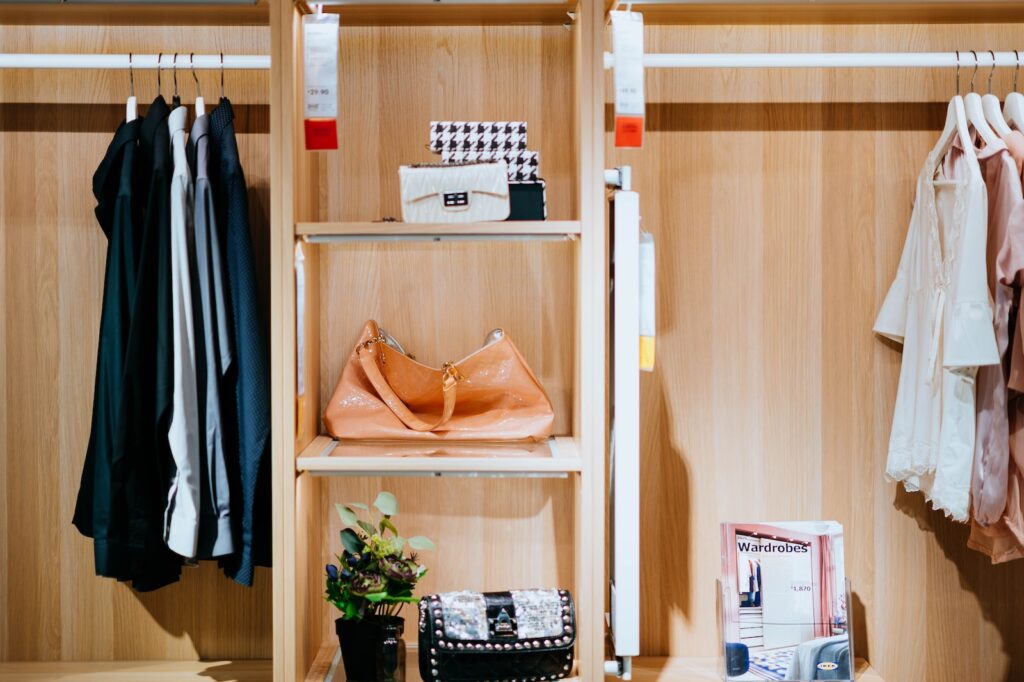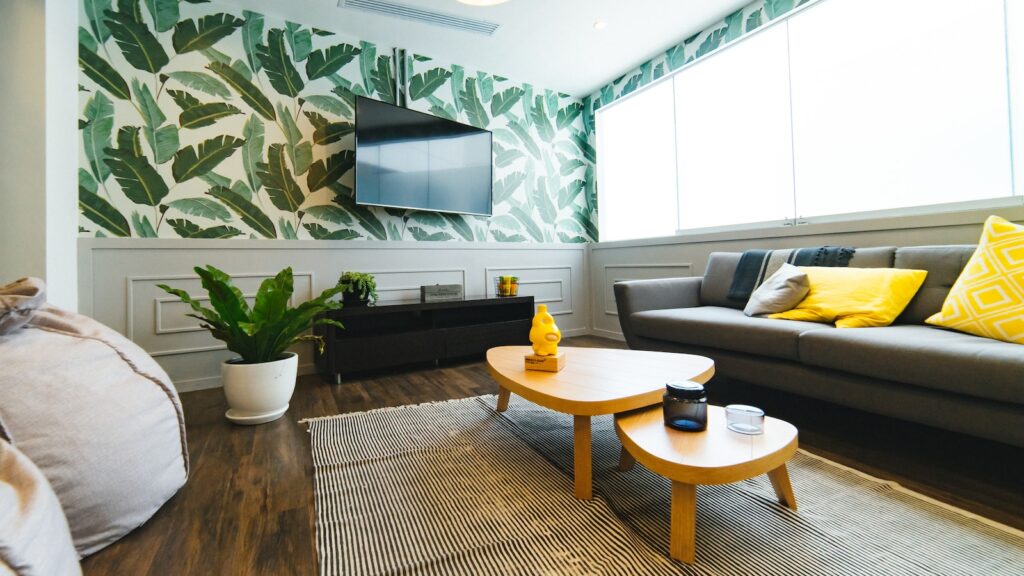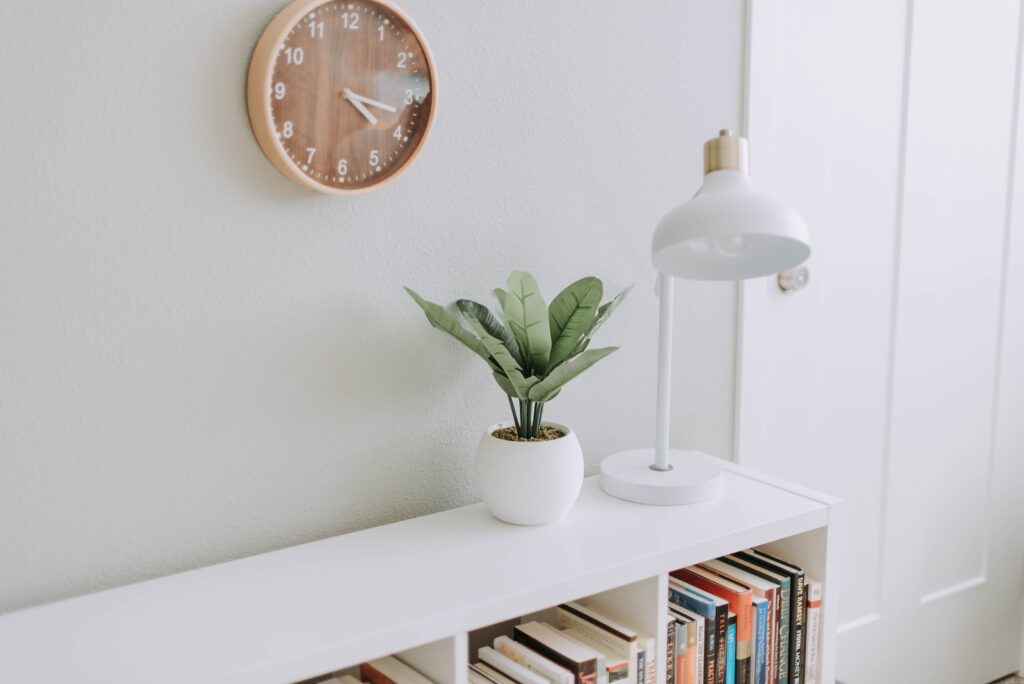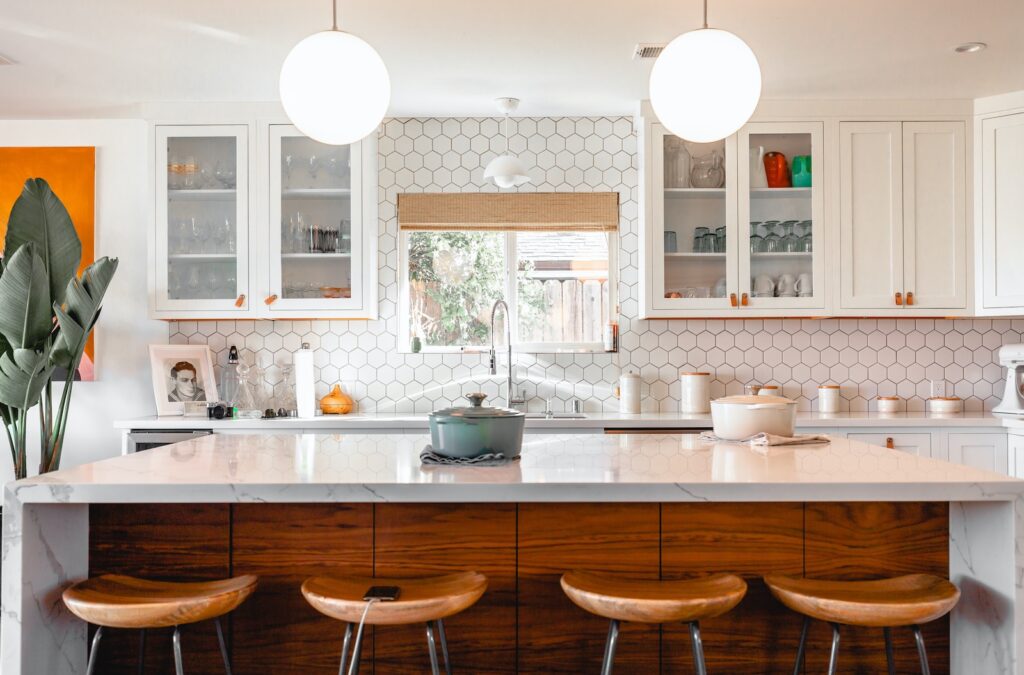To achieve an orderly style, it is vital to keep one’s apparel well managed. A practical way to sort your wardrobe is by categorizing clothing according to outfits.
Here are the steps to sort wardrobe items by outfit:
- Identify the clothes you wear together
- Categorize the clothes into complete outfits
- Hang each outfit together in the closet
- Group similar outfits together for easy access.
Remember that clothes aren’t just wrappings, but serve as a crucial expression of one’s identity. Therefore, sorting by outfits makes getting ready more manageable while providing a sense of personal style.
Over time, people tend to accumulate old or unused clothing which occupies costly storage space. Consider donating these pieces to thrift stores or charities instead of leaving them to lie around idle.
On a personal note, my sister discovered this method on Pinterest and had been keeping her closet tidy using this technique ever since. Consequently, she has developed a one-of-a-kind fashion brand that incorporates her distinct personality and organizational abilities.
Choosing your outfits is like playing a game of Tetris, but instead of blocks, you’re trying to fit your body into your closet.
Choosing your outfits
To choose your outfits wisely, with “How do I Organize My Closet by Outfit?” as a guide, assess your style and inventory your clothes. Combine your clothes by color and plan your outfit categories for easy access.
Assess your style
Start by evaluating your personal aesthetic and preferences to guide your outfit choices. This involves examining your style, color palette, body type, and lifestyle requirements. Deciding what suits you will allow for better selection of outfits that align with your taste and personality, resulting in a confident and stylish appearance.
Once you have assessed your fashion sensibilities, consider the occasion or event where the outfit will be worn. Adapting your style for formal or casual situations is necessary to ensure appropriateness. Additionally, consider weather conditions and dress codes to avoid being under or over-dressed.
Aim to diversify your wardrobe by experimenting with new trends while maintaining a cohesive look. Incorporate statement pieces, textures and accessories to keep your outfits interesting and fresh. Despite following fashion guidelines, don’t disregard personal expression when making choices.
To make shopping more manageable, create a list of versatile pieces that complement existing items in your wardrobe. This approach assists in making informed purchases while reducing waste and maximizing usage. Remember that investing in quality items can result in long-term wear while creating savings over time.
By assessing your style, considering the occasion, diversifying options within reason and shopping strategically – you’ll be sure to create a wardrobe suited to you!
Who needs a mood ring when you can just wear a perfectly coordinated outfit?
Combine your clothes by color
Color Coordination for Stylish Outfits
Selecting the right color combinations for your outfits can be overwhelming. To get that perfect look, you need to coordinate your colors effectively. Here are six tips for combining clothes by color:
- Pairing complementary colors like blue and orange, yellow and purple, or red and green.
- Using the same color in different shades or textures for a monochromatic look.
- Creating sleek ensembles by teaming black with white or beige.
- Mixing neutrals with bright hues for balance and depth.
- Opting for analogous colors that lie side-by-side on the color wheel. For example, blue with purple or green with yellow.
- Trying out triadic combinations such as red, yellow, and blue for bold statements.
When creating outfits by coordinating colors, it’s essential to keep in mind multiple aspects such as skin tone, occasion, body shape, personal style etc.
Additionally, accessorizing your outfit properly can enhance the overall look of your pairing.
Did you know that several studies have found that wearing brightly colored clothes can boost your confidence levels?
Because let’s be real, we all need a reason to justify having a ‘comfy but cute’ category in our wardrobe.
Create outfit categories
Grouping Your Attires
Classifying your clothing items can be a daunting task, especially when there are endless styles and trends to choose from. Nonetheless, creating outfit categories can help you establish a purposeful wardrobe that suits your style and lifestyle.
To simplify the process of grouping your attires, we recommend these six points:
- Define your personal style
- Categorize based on occasions – formal, casual, business
- Arrange by season
- Organize by color or print
- Separate by type – tops, bottoms, dresses, accessories
- Trace inspiration from celebrities or fashion bloggers.
In addition to the basic categories mentioned in the previous paragraph, some unique ways to group your clothes are according to fabric texture and layering proportions. These methods not only maintain wardrobes’ structure but also enhance savvy styling options.
Research shows that people decide within seven seconds of meeting someone what their first impression is. Consequently, donning attire that truly incorporates all the design essentials will ensure long-lasting positive impressions.
Fact: The Journal of Social Psychology published in 2015 revealed that clothing choices affect first impressions during social interactions.
Store your outfits in a way that reflects your personality – if you’re chaotic, just shove them all in a cupboard; if you’re OCD, colour code them and arrange by season.
Storing your outfits
To store your outfits efficiently, use hangers and dividers, shelving units, and storage containers. These sub-sections provide solutions to organize your closet by outfit, making it easier to find what you need without sifting through piles of clothes.
Hangers and dividers
When it comes to organizing your wardrobe and storing your outfits, there are various methods you can use. One effective technique is using tools such as fasteners and separators.
Here are five points to consider when using these tools:
- Use hangers to ensure clothing hangs properly and is easy to find.
- Consider velvet or flocked hangers for delicate items that could easily slip off plastic or wire hangers.
- Utilize divider tabs for closet shelves or drawers to separate clothing categories and increase accessibility.
- Try compartmentalized drawer organizers to simplify the process of separating outfits according to specific occasions or seasons.
- If you have limited space, consider cascading hooks that maximize vertical hanging space while minimizing clutter.
Another detail to keep in mind is that using dividers and hangers isn’t just about aesthetic appeal but also prolonging the life of your clothes.
Lastly, a friend of mine who used to store her clothes carelessly lost some items due to disorganization. The lesson learned is that proper storage techniques aren’t only helpful for organization purposes but also crucial for preserving clothes long-term.
If you’re running out of closet space, shelving units are a great way to display your outfits and pretend you’re in your own personal boutique.
Shelving units
When it comes to organizing your wardrobe, there are various solutions available to you and one of them is a set of specially crafted racks that can store your costumes. These supports come in different sizes, materials, shapes, and designs. They provide an excellent means for maximizing your storage space while keeping your outfits tidy.
- Shelving units come in various sizes
- They are made from wood, plastic, or metal
- They can be freestanding or wall-mounted
- Some types have adjustable shelves to accommodate different items
- They offer a wide range of design options to suit different decor styles
- Their durability and sturdiness depend on the quality of material used
Additionally, these units can cater to the varying needs of people requiring storage solutions for their clothing items. They offer great flexibility when it comes to personalized organization choices. With the right kind of shelving unit, you no longer need to worry about finding enough closet space.
In fact, I once helped my friend choose a suitable shelving unit that could help maximize her bedroom space. She had too many clothes but a small closet which made it difficult for her outfits to be neatly arranged. After purchasing the right shelving unit and placing it in her room, she was more organized than ever before and always knew where each piece was stored. The improved tidiness brought a renewed sense of comfort and peace into her bedroom.
Time to upgrade from cardboard boxes to storage containers – your clothes deserve a fancier home, even if you’re living off ramen noodles.
Storage containers
When it comes to storing your outfits, there are various options available in the market for containers that cater specifically to your needs.
- Containers made of breathable materials can prevent the growth of mold and mildew, making them a suitable option for storing clothes that are not frequently used.
- Plastic storage bins with tight-fitting lids protect clothes from moisture and dust, making them ideal for long-term storage.
- Vacuum-sealed bags can shrink clothing while safeguarding them from damage caused by pests or moisture.
- Hanging garments bags are optimal for keeping suits, dresses, and coats wrinkle-free while also providing visibility to its contents.
- Shoeboxes or clear plastic shoe organizers keep shoes in good condition while taking up minimal space in your wardrobe.
It is important to consider the size of your wardrobe, storage requirements, and clothing items when selecting a suitable container.
To ensure adequate organization while minimizing clutter, categorize your belongings systematically based on usage frequency or seasonal classifications.
Picking appropriate containers can help increase the longevity of clothing longevity by preventing damage from light exposure or unfavorable temperatures. Moreover, labeling each container according to its contents helps locate items easily.
A tidy closet is the closest thing to peace on earth, or at least in your home.
Maintaining your organized closet
To maintain your organized closet with outfits, you need to regularly declutter it, store seasonal items, and consistently put things away. As a solution, we have divided this section into sub-sections that will help you approach closet organization in a step-by-step manner.
Regularly decluttering
Decluttering your closet on a regular basis is a crucial aspect of maintaining an organized wardrobe. By periodically reassessing and purging unnecessary items, you can keep your closet clean and tidy.
- Regular decluttering helps you to identify and remove items that no longer serve a purpose or are in poor condition.
- It ensures that your clothes are easily accessible, and you can find what you need without wasting time.
- You can donate or sell unwanted clothing and accessories instead of letting them take up space in your closet.
In addition to the standard decluttering process, consider implementing a one-in-one-out policy for new purchases to prevent clothes from piling up over time.
Pro Tip: Set aside specific times for decluttering to make it a habit and avoid letting it become overwhelming.
Your closet is the only place where summer and winter coexist peacefully, until you realize you forgot to pack away your ugly Christmas sweater.
Storing seasonal items
Storing your out-of-season wardrobe for optimal closet organization is essential. Use these tips to ensure a seamless transition between seasonal clothing changes:
- Sort and Declutter – Before storing, sort through the clothes and dispose of any that are damaged or no longer fit. This will help trim down your inventory and keep everything organized.
- Label containers – Separate your clothes into storage bins by season and add labels to each container for easy identification
- Opt for clear Storage Containers – Clear plastic bags or boxes make it easy to identify what’s inside without having to go through the trouble of opening them.
- Mind the Temperature– Find a cool, dry place that provides adequate airflow without exposing valuables to excessive moisture or sunlight.
- Moth-proofing – Protect your clothes from moths by scattering mothballs throughout the containers’ interiors before sealing them shut
Additionally, make sure you store winter items like puffy coats properly by placing them in large vacuum-sealed bags. This provides additional protection from damages and maximizes available storage space.
To prevent damage during long-term storage, use high-quality products designed specifically for protecting textiles. For example, opt for acid-free tissue paper instead of regular newspaper to wrap up delicate garments as it does not cause yellowing over time.
By applying these tips, you can effectively store seasonal items while optimizing usable closet space, creating an organized wardrobe that’s easier to navigate.
Never underestimate the power of consistency, especially when it comes to putting away your clothes – because if you don’t, your organized closet will quickly turn into a chaotic pile of laundry.
Consistently putting things away
Maintaining an organized closet requires consistent and diligent efforts to put things away in their designated places.
To achieve this, consider these four points:
- Keep hangers and hooks available for easy access to clothes.
- Store shoes in designated shelves or racks to avoid clutter.
- Use baskets or boxes to store smaller items and accessories.
- Dedicate time each week to reorganize and declutter the closet.
It is important to note that consistent organization habits can improve mental clarity and reduce stress levels during daily routines.
There is no doubt that maintaining a well-organized closet has been a challenge for many people throughout history. From Marie Kondo’s popular KonMari method to the ancient Chinese art of Feng Shui, different approaches have been adopted over time. Nevertheless, the basic principle remains the same – consistently putting things away in an orderly manner is key to a neat and clutter-free wardrobe.
Frequently Asked Questions
Q: How do I begin organizing my closet by outfit?
A: Start by separating your clothing into categories such as work clothes, casual wear, special occasion outfits, etc. Then, go through each category and create outfits by pairing tops and bottoms or dresses with accessories.
Q: Is it necessary to get rid of clothing in order to organize my closet by outfit?
A: Not necessarily, but it is recommended to go through your clothing and get rid of items that no longer fit or haven’t been worn in a while. This will make it easier to see what you have and create outfits that you actually wear.
Q: How do I store my outfits once they are created?
A: You can use hangers or folded shelves to store your outfits. It’s helpful to label your hangers or shelves with the outfit name or category it belongs to. This makes it easy to grab an outfit quickly when you’re pressed for time.
Q: Should I organize my closet by color or by category?
A: It’s up to personal preference, but organizing by category (work clothes, casual wear, etc.) may make it easier to create outfits for specific occasions. However, if you prefer to organize by color, it can make it easier to find specific pieces quickly.
Q: How often should I update my closet organization by outfit?
A: It’s recommended to update your closet organization seasonally. This allows you to switch out your heavier winter clothing for lighter spring and summer pieces, and vice versa.
Q: What if I have limited closet space?
A: You can still organize your closet by outfit with limited space, it just may require some creativity. Utilize space-saving hangers and shoe organizers, and consider storing out-of-season clothing elsewhere to make room for your current season outfits.
{
“@context”: “https://schema.org”,
“@type”: “FAQPage”,
“mainEntity”: [
{
“@type”: “Question”,
“name”: “How do I begin organizing my closet by outfit?”,
“acceptedAnswer”: {
“@type”: “Answer”,
“text”: “Start by separating your clothing into categories such as work clothes, casual wear, special occasion outfits, etc. Then, go through each category and create outfits by pairing tops and bottoms or dresses with accessories.”
}
},
{
“@type”: “Question”,
“name”: “Is it necessary to get rid of clothing in order to organize my closet by outfit?”,
“acceptedAnswer”: {
“@type”: “Answer”,
“text”: “Not necessarily, but it is recommended to go through your clothing and get rid of items that no longer fit or haven’t been worn in a while. This will make it easier to see what you have and create outfits that you actually wear.”
}
},
{
“@type”: “Question”,
“name”: “How do I store my outfits once they are created?”,
“acceptedAnswer”: {
“@type”: “Answer”,
“text”: “You can use hangers or folded shelves to store your outfits. It’s helpful to label your hangers or shelves with the outfit name or category it belongs to. This makes it easy to grab an outfit quickly when you’re pressed for time.”
}
},
{
“@type”: “Question”,
“name”: “Should I organize my closet by color or by category?”,
“acceptedAnswer”: {
“@type”: “Answer”,
“text”: “It’s up to personal preference, but organizing by category (work clothes, casual wear, etc.) may make it easier to create outfits for specific occasions. However, if you prefer to organize by color, it can make it easier to find specific pieces quickly.”
}
},
{
“@type”: “Question”,
“name”: “How often should I update my closet organization by outfit?”,
“acceptedAnswer”: {
“@type”: “Answer”,
“text”: “It’s recommended to update your closet organization seasonally. This allows you to switch out your heavier winter clothing for lighter spring and summer pieces, and vice versa.”
}
},
{
“@type”: “Question”,
“name”: “What if I have limited closet space?”,
“acceptedAnswer”: {
“@type”: “Answer”,
“text”: “You can still organize your closet by outfit with limited space, it just may require some creativity. Utilize space-saving hangers and shoe organizers, and consider storing out-of-season clothing elsewhere to make room for your current season outfits.”
}
}
]
}



